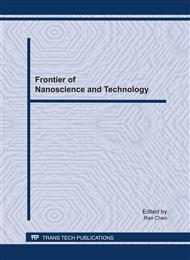p.901
p.908
p.914
p.919
p.923
p.928
p.931
p.936
p.946
An Efficient Catalysis-Oxidation Method for the Degradation of Phenol in Wastewater
Abstract:
In this study, we developed an efficient catalysis-oxidation method for the degradation of phenol in wastewater, in which the Fe3O4 nanocrystals and H2O2 were employed as catalyst and oxidation agents respectively. Firstly, Fe3O4 nanocrystal coated with PEG was prepared via an oxygenation-deposition hydrothermal method, TEM, FT-IR, BET and XRD characterization indicated that the prepared Fe3O4 nanocrystals had an average size of 26 nm and the specific surface of 35.25 m2/g. Using the prepared Fe3O4 nanocrystals as catalyst, the phenol in wastewater was efficiently degraded by H2O2. The degradability of the phenol was investigated by FT-IR, HPLC and UV–visible spectrophotometer, and the experimental results showed that the phenol was efficiently degraded by H2O2 and the Fe3O4 nanocrystals could be efficiently recycled. Finally, the possible catalytic reaction mechanisms and pathways of phenol degradation were discussed.
Info:
Periodical:
Pages:
936-945
Citation:
Online since:
July 2011
Authors:
Keywords:
Price:
Сopyright:
© 2011 Trans Tech Publications Ltd. All Rights Reserved
Share:
Citation:


